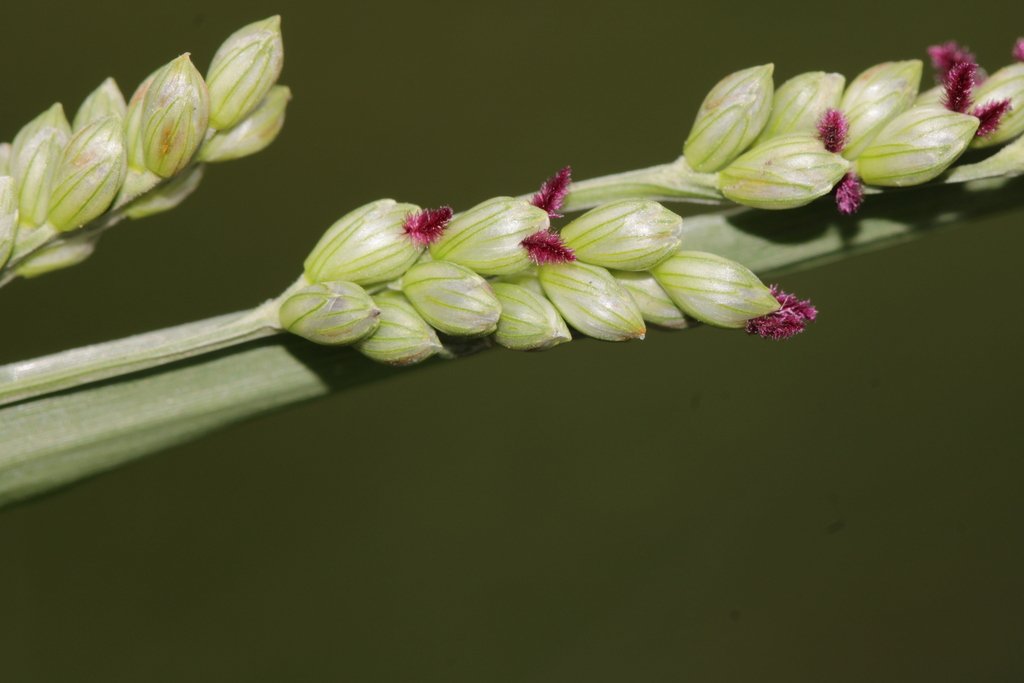Vine Mesquite
Hopia obtusa
Family: Poaceae
Sod-forming perennial grass reaching two and a half feet tall. Blooms in May through October followed by rather large seeds (for a grass).
H. obtusa is distinguished by being an erect to ascending perennial grass with long stolons or shallow rhizomes and often blue-green leaves. The inflorescences are branched, but narrow and contracted, bearing large, oblong, hard, one-seeded spikelets wrapped in bracts (lemmas and glumes) with vertical green veins, the purple stigmas usually peeking out before seeds ripen. Cures light reddish then grayish tan.
Full sun to shady spots, regular water, spreads very fast.
Great tortoise enclosure plant because of its spreading nature (keeps up with the tortoise appetite). Large seeds are enjoyed by granivorous birds. As with most grasses this species provides as a larval host for many butterflies and moths, most especially and specifically for the Dotted Roadside-Skipper (Amblyscirtes eos).
The seeds are edible. The roots used to produce a shampoo.
Hopia is an honorific for the Hopi people, while obtusa means blunted, referring to the shape of the spikelets. Hopia is a monotypic genus, this is the only species. This plant was treated as Panicum obtusum until recently when more molecular and genetic material revealed new information about it.
Found in seasonally wet sand or gravel, especially on stream banks, ditches, roadsides, wet pastures, and rangeland, from 1,000-6,000 ft.



